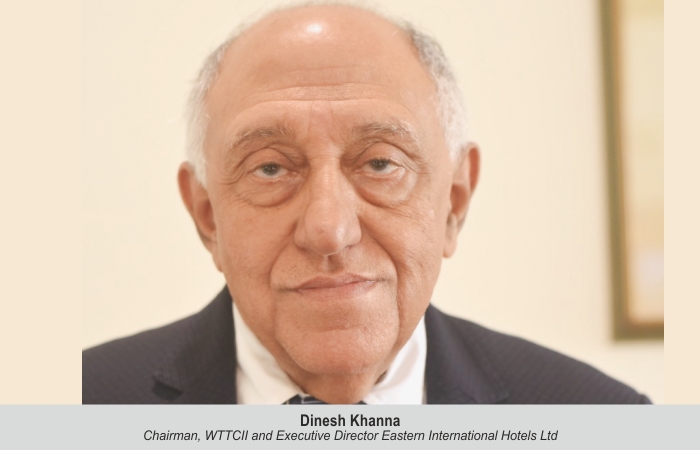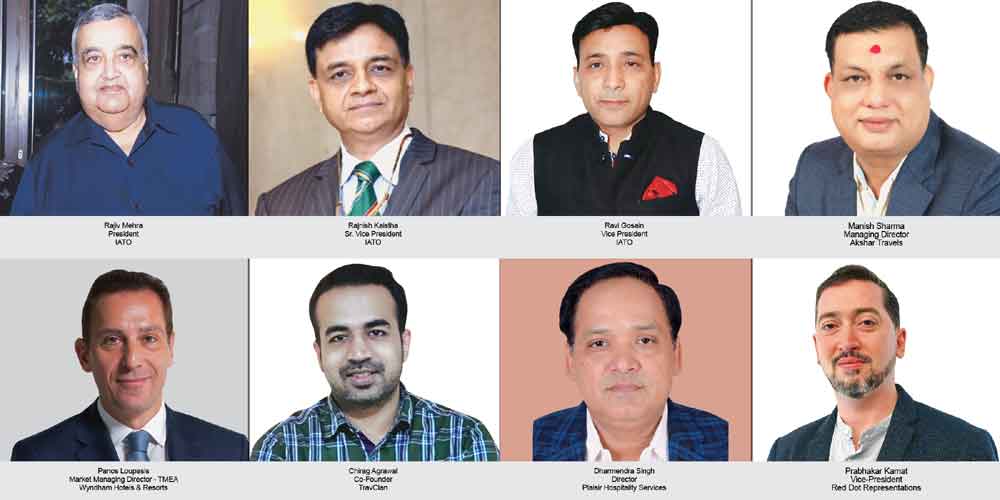In response to COVID-19, WTTCII is working with central and state governments on policies and practices to make most of India’s tourism potential. Country must prepare for opening its borders to bring back international travellers from non-risk countries.
Janice Alyosius
The tourism and hospitality sectors have been hard hit by the pandemic. The World Travel & Tourism Council, India Initiative (WTTCII) is working with the centre and state governments on policies and practices to maximise India’s tourism potential.
“For the last two years, we have been advocating with the government on various ways to overcome the pandemic. In fact, the Hon’ble Finance Minister in her Budget Speech acknowledged and put in motion one of our key recommendations, the extension of the ECLGS. This, with an additional fund of Rs 50,000 crores earmarked exclusively for hospitality and related sectors, will provide relief,” said Dinesh Khanna, Chairman, WTTCII and Executive Director, Eastern International Hotels Ltd.
“With the pandemic, over 2020–2021 and three waves, we have seen the tourism industry plummet and rise. We are in the middle of the Omicron wave, and data from John Hopkins University and Massachusetts General Hospital points to the end of this pandemic. At the end of March 2022, we should be looking at normalcy. In spite of the three COVID-19 waves, we have seen domestic tourism demand rise,” he said.
“In the short term, with lower caseloads, we hope that domestic tourism will rebound and hold the sector for the next four to six months. We must be prepared to open borders and focus on bringing back foreign travellers. It must be based on the individual status of the traveller rather than a blanket ban or red-list of countries. We need to reconnect the Incredible India campaigns to our source markets. We welcome the government’s move to include the Indian embassies and missions in the promotions and marketing strategy. This will give a solid grounding to our market presence. We need to focus on the right policies now to make the sector comeback and come back fast,” he added.
Considering the top priorities for regaining India’s status as a premier travel destination, Khanna believes that India must rebuild its image. “Many destinations around the world have begun doing so by launching targeted and aggressive customer-reconnecting campaigns. India must emulate Thailand’s sandbox programmes to slowly ease international travellers into the country,” he suggested.
“We need to announce to the world that we are ready to receive guests. Closing borders will not stop the propagation of the pandemic. Well-meaning, high-intent travellers who are willing to take the risks, take bubble flights, comply with our health and hygiene protocols and travel to and stay in India for a possible longer duration. We welcome the UK government’s decision to scrap testing for those who are fully vaccinated travelling to the UK and to remove pre-departure tests for travellers and replace day two PCR tests with lateral flow tests. We need to adopt such best practices in opening borders and implement immediate measures to open India as a destination. In terms of access, Indian low-cost or full service must be encouraged with easier bilateral support and supportive code share arrangements to connect prime source markets and increase seat capacity,” he added.
Khanna predicted that Indian tourism as a destination of choice will rebound post-pandemic if the international travel industry can recover quickly, travel restrictions across the globe are lifted and the third wave ends.
 TravTalk India Online Magazine
TravTalk India Online Magazine





